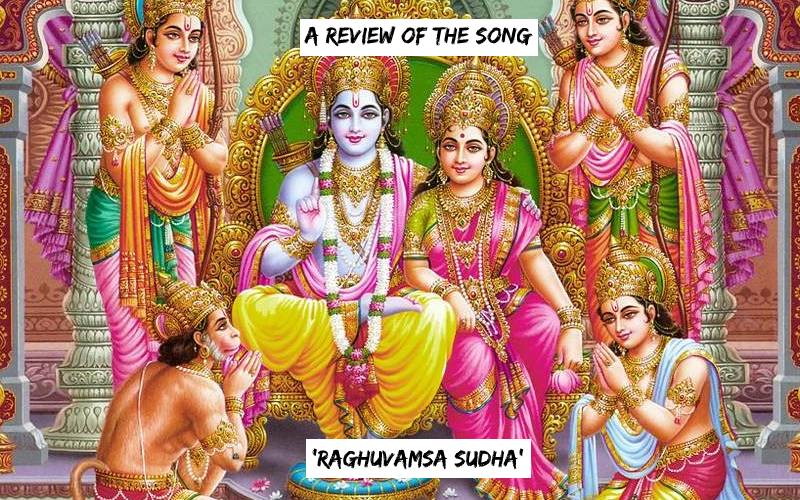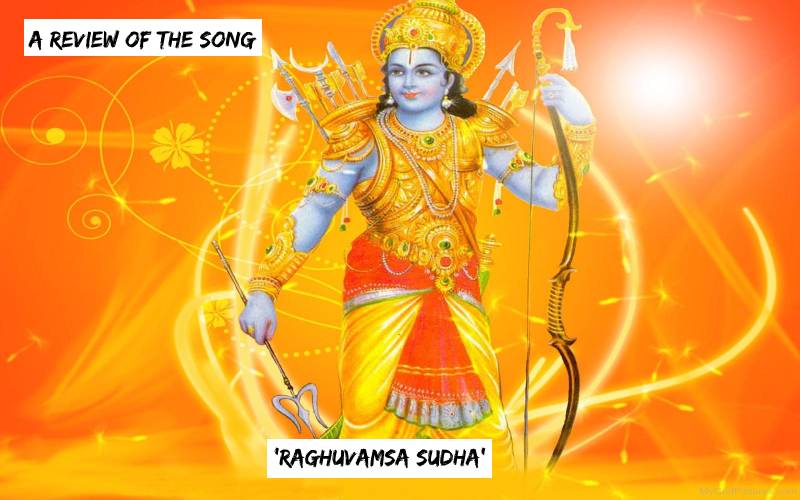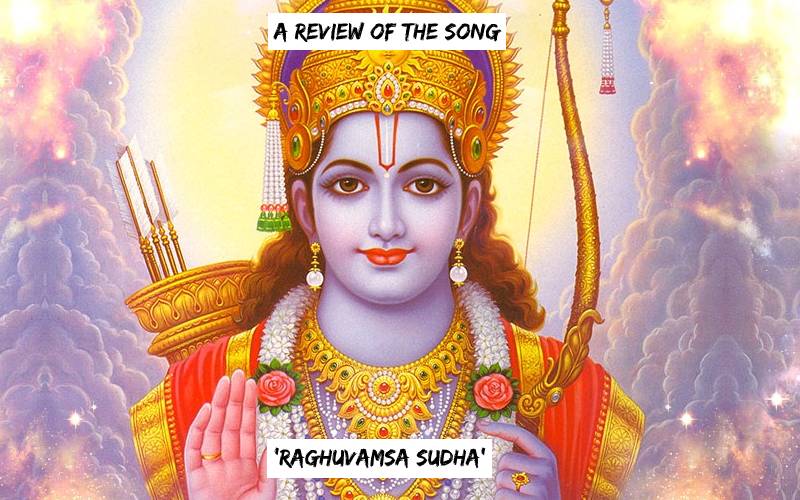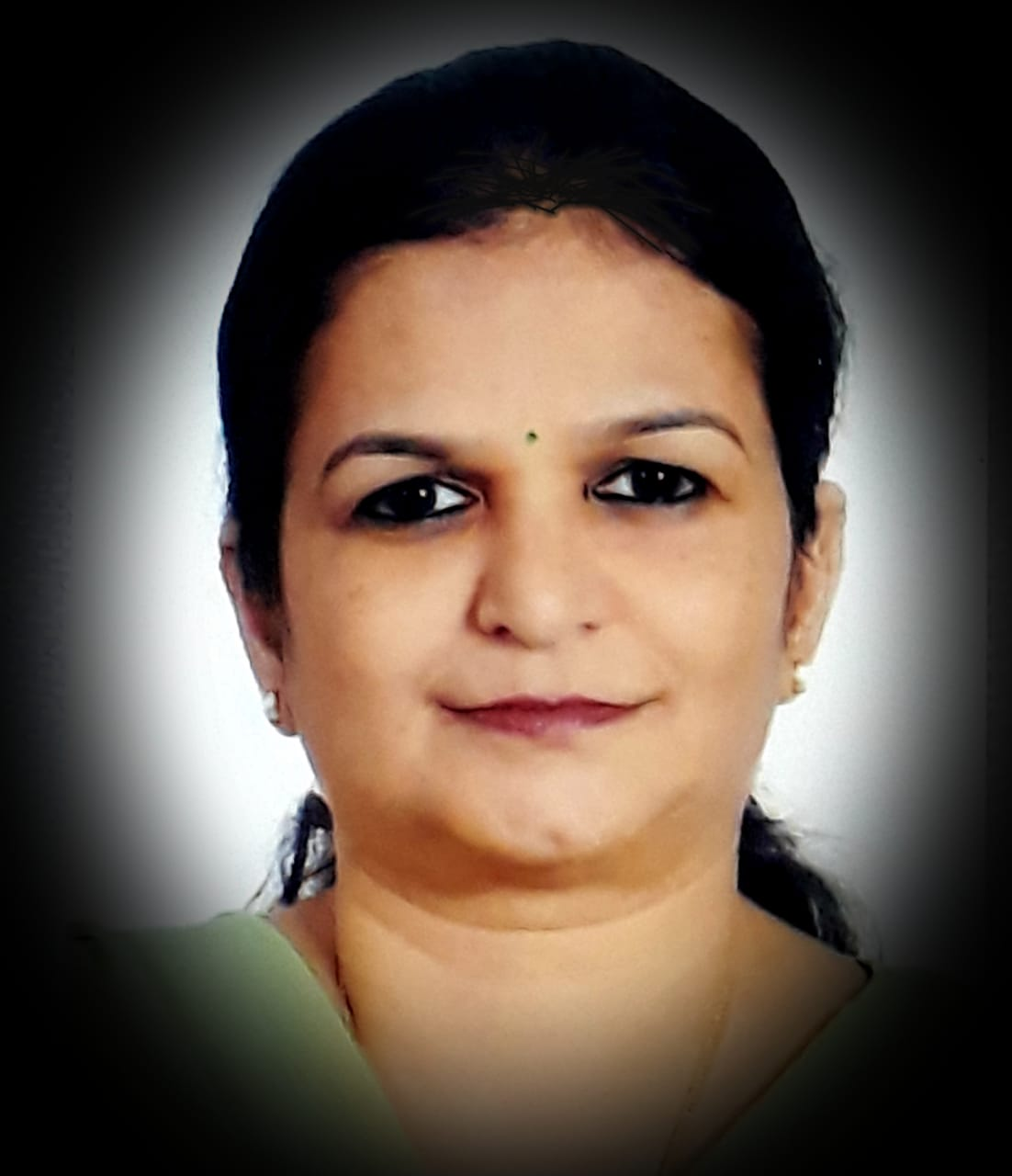‘Raghuvamsa Sudha’ is an appealing song composed by the illustrious composer Patnam Subramania Iyer. He was born in 1845 in Thiruvaiyaaru, in the Thanjavur District of Tamil Nadu. He belonged to a family which had music ingrained in them. His father Baratham Vaidyanadha Iyer was adept at music and shastras. His grandfather Panchanada Shastri was the Asthana vidwan (Court musician) of Saraboji Maharaja of Thanjavur. Subramania Iyer learnt music from Venkata Subbayar, who was the disciple of Saint Thyagaraja himself. Hence, Subramania Iyer followed the path laid by Saint Thyagaraja, and became the torch bearer of Thyagaraja’s musical tradition. He had relocated his residence to Chennai Patnam (Chennai) to conduct music classes. Hence, the prefix ‘Patnam’ was appended to his name.
He was an excellent teacher and trained an impressive lot of disciples like, Mysore Vasudevacharya, Bhairavi Kempegowda, Tiger Varadhachariar, M. S. Ramasamy and Poochi Srinivasa Iyengar. Some of his disciples themselves were eminent composers. He was a versatile musician and a prolific composer. His creations sum up to a total of hundred Carnatic compositions. His kriti-s, javali-s, thillana-s and varnam-s are sheer delight to connoisseurs of music. Some of his acclaimed compositions are, ‘Raghuvamsa Sudha,’ ‘Evari Bodhana,’ ‘Mariverey Dhikkevaru,’ and ‘Valachi vacchi.’ The then reigning Maharaja of Mysore Chamarajendra Wodeyar was totally enthralled by Subramania Iyer’s resplendent musical performances and presented him with a pair of Golden bracelets on two occasions.

The song ‘Raghuvamsa Sudha’ is composed in the raga Kadhanakuthuhalam and set in the adi thala. Kadhanakuthuhalam raga is derived from the Shankarabharanam scale. The name of this raga has a twin-pronged meaning. On one hand it means immense joy and exhilaration and on the other it means Kathana (War) and Kuthuhalam (Quest). This raga makes one feel energized. It is replete with positive vibes which are transmitted to the listeners. It is believed that this song was sung to motivate the kings and rejuvenate them before a battle. This fast-paced krithi would boost their courage and render them the impetus to win the battles.
In the Pallavi (First stanza) the composer glorifies Lord Rama as the moon of the Raghu vamsa (Raghu lineage) and is paralleled to the ocean of nectar. He hails Shri Rama as ‘Rajeshwara’ (The lord of all emperors).
In the Anu pallavi (Second stanza), ‘Aghamegha marutha shrikara,’ he states that, just as the gusty wind blows away the clouds, likewise, Lord Rama blows away our sins and He is the bestower of prosperity. ‘Asuresha mrugendra vara Jagannatha’, describes Lord Vishnu, (The Lord of the world) as the lion (Narasimha) who terrifies the asura (Hiranyakashipu).

The composer has inlayed chitta swara-s in this song. Chitta swara is a set of sol-fa passages (Phrases of only notes without lyrics) is a unique feature in Carnatic music. They are sung after the anu pallavi and the charanam to enhance and enrich the compositions. The composer also has presented the chitta swara in medium and fast tempo which adds peppiness to the composition.
The Charanam (Concluding stanza) recounts the encounter between Lord Rama and Lord Parashurama. Lord Shiva had gifted his famous bow Pinaka to his devotee Devavrata who was the ancestor of King Janaka (The ruler of Mythila). King Janaka wanted a suitable groom for his daughter Sita, hence he declared that only a King who could lift and string the Shiva dhanush could marry Sita. Lord Rama at the swayamwara broke the invincible Shiva dhanush and won the hand of Sita Devi.

After their wedding, when the marriage party was ready to return to Ayodhya, they were prevented from doing so by Parashurama, the son of Jamadagni. Parashurama challenged Lord Rama to string and fit the arrow of his Vishnu dhanush to prove his strength and prowess. Parashurama also stated that although the Shiva dhanush and Vishnu dhanush were crafted by Vishwakarma (The architect of the Gods) the Vishnu dhanush proved to be more powerful.
Lord Rama with humility took the Vishnu dhanush and arrow from Parashurama and He effortlessly placed the arrow in the bow, drew it fully, thereby vanquished Parashurama’s pride. The poet has penned the apt words, “Jamadagnija garva khandana” (The destroyer of Parashurama’s vanity). Lord Rama is hailed even by Rudra (Lord Shiva). He is eulogized as the ornament of the Solar Dynasty. Rama is praised as, “Aganithaathpudha Sourya Sri Venkatesha,” Lord Venkateshwara who performs innumerable marvelous heroic feats. Subramania Iyer is known to have used his Guru’s Mudra (Signature) Venkatesha in many of his compositions including this one.
The Queen of Carnatic Music, M. S. Subbhulakshmi amma has rendered this song. It was popularized under the album ‘Hits of M. S. Subbulakshmi.’ It is an evergreen song which always enlivens the concerts. When listening to this song the rasika-s get drifted away to the cloud nine.

Yamuna is a resident of Coimbatore and is pursuing Hindustani vocal music under the tutelage of Shri Kedar Karatji. She also teaches bhajans and conducts English Grammar classes for school children. Her other passions are writing travelogues, playing keyboard, gardening, going on pilgrimages and exploring & enriching her knowledge through travel.
NEXT ARTICLE